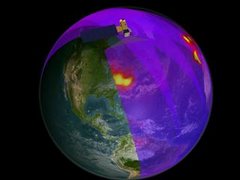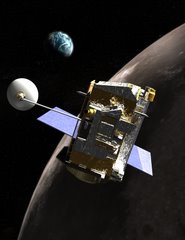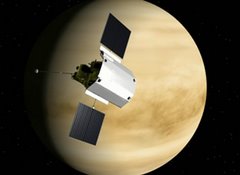I’m on the road (again) this week. This time, I’m in Portland, Oregon. I flew out a couple of days early to get some vacation time. While the weather hasn’t exactly been cooperating, the geology certainly has!
I did some driving today through the
Columbia River Gorge and around Mount Hood, and I wanted to share with you some really cool geology from the area.
First of all, I should probably provide some background. The Columbia River Gorge has been (after all, it is still being formed) formed through a series of events that have occurred to give it its current configuration. This configuration was especially

important for the Oregon Trail, but that’s a whole different post.
Anyway, between 17 and 12 million years ago, the Columbia River plateau formed from a series of flood basalt flows. These flows were unlike anything we see today. The area covered by these flows (similar flows occurred in the
Deccan Traps) includes portions of today’s Washington, Oregon, and Idaho - to the tune of 164,000 square kilometers. As these basalt flows (think the same kind of rock found in the Hawai’ian islands) cooled, the rocks cracked, forming
columnar basalts. I was able to see these columnar basalts when I visited several waterfalls along the gorge.
Since then, the area witnessed the birth of the Cascade Mountain range. Unlike other mountain ranges such as the Sierra Nevadas or the Appalachian Mountains, the Cascade Range consists of a series of volcanoes. Among these volcanoes are the infamous

Mount St. Helens, Mount Rainier, and Mount Hood. Because of their proximity to subducting tectonic plates, these volcanoes erupt with a siliceous magma that is very viscous (hard to flow). These rocks form a special kind of volcanic rock called andesite, and can be seen not only throughout the Cascades, but also the Andes (hence the name -
ande-site). Today, as I circled around Mount Hood, I came across some of those andesites.

At the same time the Cascades were forming, the entire area has undergone a tectonic uplift, raising the continental crust. The action from the mighty Columbia River has served to form what is now known as the Columbia River Gorge. It’s the same kind of process that has helped form the
Grand Canyon. As the continental crust raises, the river’s force has scoured out the landscape as it makes its way to the ocean. Because the area rose so rapidly (in geologic times, mind you), the river gouged out a narrow passageway instead of meandering its way across the land. To picture the difference between the two processes, think of a comparison between the Grand Canyon and the Mississippi River delta. One is deep and narrow, one is wide and flat.
Well folks, there you have it. Geology 101 from the Cascades. I hope the next time you step out your front door, think of all the things that had to take place in the past to shape the land to its current configuration!









